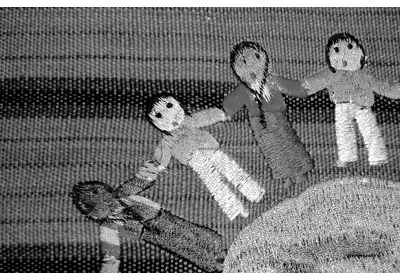Today, an inspirational post on tolerance from one of our favourite bloggers, Neil Crofts:
Over millions of years humans have evolved to have a finely tuned distrust of difference. In the stone age settlement, difference meant danger. Millions of years of our evolution were invested in intolerance of difference as a safety advantage.
It should not be a surprise therefore that there are still many people today who see safety in similarity. There is evidence all over the world of intolerance of difference in religion, colour, sexual orientation, nationality and anything that might create the opportunity for an ‘in group’ and an ‘out group’.
In spite of the evolutionary history, we are not born intolerant. It is a social evolution. We learn intolerance from our parents and our peers. Very rarely do we learn intolerance from direct experience, because in most cases the “intolerant” don’t engage frequently with the objects of their intolerance.
While intolerance and the exclusion that it creates might have been safe strategies in the Palaeolithic, they are profoundly dangerous strategies today. Intolerance and exclusion are at the root cause of virtually all of the conflict in the far more crowded world of today. We have too little space and too much communication to successfully isolate ourselves from difference.
Conversely, tolerance and inclusion turn out to be highly successful strategies. In the vanguard of tolerance and inclusion today are forward-thinking corporations. It was not long ago that corporate life was a bastion of homogeneity, but over the last 20 years that has changed dramatically and many of the more advanced corporations are now positive examples of heterogeneous inclusion.
This has been a deliberate strategy not an accident. It has taken significant effort and investment to make this happen. Corporations are not prone to investing heavily in things on a whim, or just because they are the right thing to do. Typically corporations invest in things that deliver a return on investment and that are more effective than the alternatives.
There are three main advantages that corporations see in diversity and inclusion:
1 – Talent – There simply are not enough talented people to go around to exclude those who are different as a pre-condition. The smorgasbord of difference you see in a typical corporate headquarters today is extraordinary, the one thing they have in common is their high level of qualification.
2 – Avoidance of groupthink – The more homogenous a group, the more substantial their blind spots and, very often, the more forceful their defence of narrow convictions. In corporate life that can lead to expensive errors and missed opportunity. Diversity of opinion and particularly disagreement are vital opportunity creators and safety nets in business.
3 – Connection to market – Global markets are just that and by definition highly diverse. Any organisation that fails to reflect its market will be at a disadvantage compared to those who do.
None of this is to say that corporations are perfect, there is still a long way to go, especially higher up the organisation, but they are paying attention to diversity and inclusion as well as broader cultural development. For the most advanced businesses, leadership is firmly viewed as being about creating an environment where people can be themselves, speak their mind without fear and be the best they can be.
If this applies to corporations, surely it also applies to countries? What we know from our work with teams is that homogenous teams are quicker to perform and with less effort and investment up front, while diverse teams can take a little longer, if members are unused to diversity, and require more effort from everyone, but the resulting level of performance is significantly higher.
Imagine a country where difference was appreciated and everyone had the opportunity to perform at their best. Would this not be a better place than a homogeneous country that put as much effort into protecting its homogeneity as into creativity?
There is an increasingly shrill rhetoric around the dangers of difference – particularly to do with immigration, dress and in some places sexual orientation. There is a risk that this vocal minority turn the clock back on tolerance. Those who believe in tolerance must continue to stand up for it courageously and not expect that it just happens automatically.
Last week a German TV presenter courageously stood up for tolerance and I would encourage all of us to do the same.
Of course there is an irony in being intolerant of intolerance. Where is the line between a valuable difference of opinion and being unacceptably judgemental? Perhaps if we use the lens of giving everyone the opportunity to shine, if we regard abusers, also as victims who need the chance to learn and grow, if we are willing to engage with abusers and help them see a different point of view we will be able to create that place – just as many corporations are doing already.
